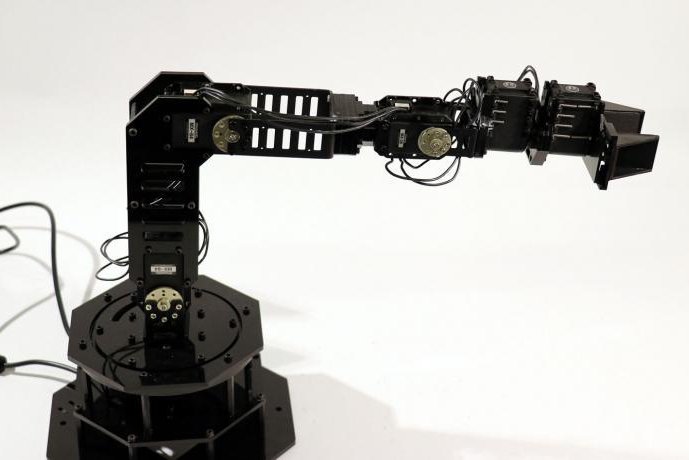The robot used its ability to form an internal image of itself to perform tasks without external inputs. Photo by Columbia University
Jan. 30 (UPI) -- Engineers at Columbia University have built a robot capable of building an image of itself from scratch.
Robots have not yet learned to create a self-image. To conceptualize themselves, today's robots rely on human-installed models or time-consuming trial and error.
Within a day-and-a-half of intense computing, the new robot can learn its identity without any knowledge of physics, geometry or motor dynamics. The robot can use its self-simulation to adapt to a variety of novel environs and tasks, and can also use its self-image to initiate internal repairs.
"If we want robots to become independent, to adapt quickly to scenarios unforeseen by their creators, then it's essential that they learn to simulate themselves," Hod Lipson, professor of mechanical engineering at Columbia, said in a news release.
Lipson is the director of the Creative Machines lab, where he and his research partners designed and built the new robot.
Researchers started with a robotic arm with four degrees of freedom of motion. The robot's road toward pseudo-self-awareness began by moving randomly, logging 1,000 trajectories, each comprising 100 positional data points. Using the data, the robot built a self model.
Initially, the self-image wasn't accurate enough for the robot to identify itself and understand how its joints are connected. But using a deep-learning algorithm, the robot perfected its self model over the course of 35 hours. Finally, the robot produced a self-image accurate to within an inch-and-a-half.
Using an open loop system, which allows for an input signal, the robot was able to perform a pick-and-place task, retrieving objects and putting them in a receptacle with 100 percent accuracy. Using a closed loop system, relying solely on its internal self-image, the robot performed the pick-and-place task with 44 percent accuracy.
"That's like trying to pick up a glass of water with your eyes closed, a process difficult even for humans," PhD student Robert Kwiatkowski said.
When researchers attached a deformed component to the segmented arm, the robot successfully used itself self-image to identify the flaw and form an updated model of itself.
Researchers described their efforts in a new paper published this week in the journal Science Robotics.
"While our robot's ability to imagine itself is still crude compared to humans, we believe that this ability is on the path to machine self-awareness," Lipson said.
Lipson thinks that by continuing to build robots with greater levels of self-awareness, researchers can develop robotic systems with more autonomy and adaptability, capable of a broader array of problem solving.
In the future, these technological advances may warrant ethical considerations.
"Self-awareness will lead to more resilient and adaptive systems, but also implies some loss of control," Lipson and Kwiatkowski wrote in their newly published paper. "It's a powerful technology, but it should be handled with care."















